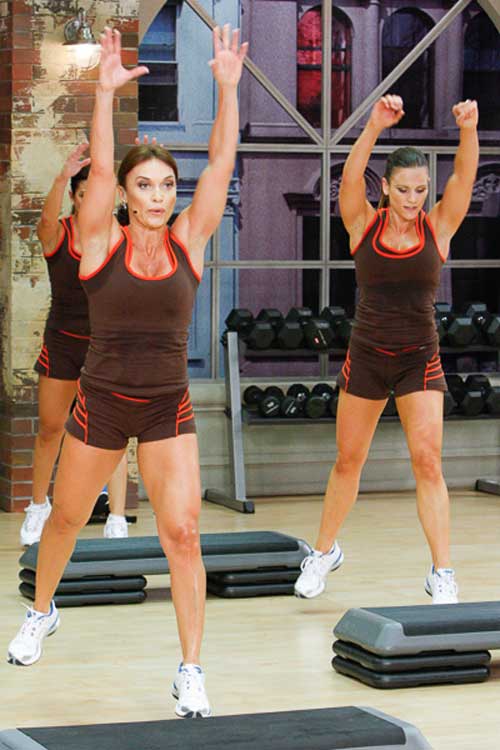
You’ve probably heard of High-Intensity Interval Training, or HIIT, in which short periods of intense exertion are alternated with rest periods. The message is clear: HIIT produces results comparable (or superior, depending on who you ask) to what can be achieved with steady-state cardio, in less time. For those at any fitness level, HIIT is more efficient at burning fat, while increasing strength and endurance. For many athletes, HIIT provides a way to avoid sustaining metabolic damage through overexertion during training. Most references to HIIT describe the duration of a session as 20-30 minutes. This is perfectly reasonable, but what if you’re so busy today (or every day) that you don’t have even 20-30 minutes to spare per session rep (not including warmups and cooldowns, or time spent driving to and from the gym)? What if you’re just easily bored? This is where Tabata comes in.
In 1996 the coach of Japan’s Olympic speed skating team, Irisawa Koichi, asked Professor Izumi Tabata to conduct a scientific evaluation of Koichi’s preferred training regime, which was a form of HIIT. The study measured both the aerobic and anaerobic benefits of steady-state cardio versus HIIT training.
Anaerobic versus Aerobic Exercise
Aerobic exercise uses primarily oxygen as fuel; it promotes respiratory and cardiovascular strength and endurance, weight loss, and overall health. Generally, an activity which can be reasonably sustained for over two minutes (walking, long-distance running, etc.) is aerobic, with benefits increasing according to duration and intensity. Anaerobic exercise, on the other hand, is exertion which occurs beyond the anaerobic threshold, wherein oxygen alone is not sufficient fuel; in this state, the body begins to rely more on glucose, and muscles tire much more quickly. Anaerobic activity can only be sustained for a short time, at most up to about 2 minutes. Strength training and sprinting are examples of primarily anaerobic exertion. The benefits of anaerobic exercise are increased muscle mass and bone density. A well-rounded exercise routine will include both aerobic and anaerobic exertion.
Steady-State Cardio versus HIIT
To analyze the efficiency of HIIT training in improving both anaerobic and aerobic fitness, Professor Tabata first studied the effects of 60-minute “moderate intensity” training, which was measured at about 70% exertion (determined according to maximal oxygen uptake, or VO2max); this steady-state cardio was performed regularly over a six week period. Following this, Professor Tabata evaluated a six week period of regular HIIT workouts in which subjects alternated 20-second bursts of high-intensity exercise (measured at 170% exertion) with 10-second rest periods, in seven to eight sets. Tabata found that while the 60-minute steady-state cardio yielded aerobic benefits, it offered no significant anaerobic improvement. The HIIT training, however, not only matched the increased aerobic capacity of steady-state cardio but also increased anaerobic endurance by 28%.
The Tabata Workout
A typical Tabata set consists of eight 20-second intervals performed at maximum exertion, alternated with 10-second low-intensity rest intervals– for example, 20 seconds of sprinting alternated with 10 seconds of walking. Tabata is not limited to running or elliptical workouts, however, and can be done with virtually any form of exercise activity or combination of activities. The warmup and cooldown are usually about 3-5 minutes each, bringing the entire set to 10-14 minutes total. One set is enough to tire out most people, but an advanced few choose to do more than one set. Tabata workouts, like other intense workouts, should be something you ease into and do in conjunction with adequate rest periods. The amount of rest needed in between workouts will vary depending on fitness level and the type of activity you choose for your Tabata sessions. Ultimately, most people begin by doing Tabata 1-3 times a week, but there should be at least one day of recovery in between sessions.
Who Should Not Do Tabata?
Those for whom strenuous exertion is not advised by their doctors should not attempt high-intensity exercise programs like Tabata. Those who are new to fitness should familiarize themselves with correct execution of an activity at a moderate pace before attempting to perform the activity at maximum intensity; making sure that your form is correct will reduce the risk of injury.
Almost anyone can make time for 10 minutes every other day. If you don’t mind working hard but hate having to carve out more than a few minutes to exercise several times a week, Tabata may be your new best friend.
*If you’re looking for a Tabata workout to do indoors try my XTrain Tabatacise workout DVD.
Related Articles By Cathe:
If You Only Have Minutes to Work Out, Here’s What to Do
High-Intensity Interval Training: How Long Should Your Active Intervals and Recovery Periods Be?
Can Music Make High-Intensity Interval Training More Effective?
Anaerobic Exercise: What Does It Mean to Go Anaerobic?
Related Cathe Friedrich Workout DVDs:
HiiT and Interval Workout DVDs

